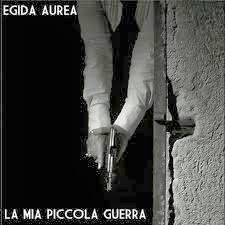L'Albero del Veleno began life in Florence in 2010 on the initiative of keyboardist and composer Nadin Petricelli and drummer Claudio Miniati with the aim to recreate the musical atmosphere of Italian horror and thriller soundtracks from the seventies. The name of the band means “The Poison Tree” and was inspired by an ancient Eastern myth, a kind of metaphor describing a beautiful entity hiding an evil nature. It tells about a tree which attracts people thanks to its fruits and to the peaceful shade of its branches but beware! The people who stop under the tree to take a rest will never wake up on account of the deathly power of its poison.
After some line up changes and a hard work, in 2013 the band released a début album, “Le radici del male” (The roots of evil), on the independent label Lizard Records. The renewed line up features Nadin Petricelli (keyboards, synth), Claudio Miniati (drums), Lorenzo Picchi (guitars), Michele Andreuccetti (bass), Francesco Catoni (viola) and Marco Brenzini (flute) and the result of their efforts is a surprisingly fresh blending of vintage sounds and new ideas. Of course, they could recall Goblin or the Swedish band Anima Morte but the band showcase a great musicianship and a touch of sparkling vitality.
The opener “Dove danzano le streghe” (Where the witches dance) begins softly, then the rhythm rises and the dance begins. The atmosphere is haunting and you can really breath tension and a strange kind of excitement where joy and fury are at war. The following “... e resta il respiro” (… and breathing remains) begins with an old, dark waltz coming from times out of mind, then the music lights like a fire casting uneasy, flickering shadows all around.
“Presenze dal passato” (Appearances from the past) has a strong classical flavour and features delicate piano patterns and melancholic violin lines. It leads to the more aggressive “Un altro giorno di terrore” (Another day of terror) where feelings like fear and pain are painted with strong musical colours. For this tack the band shot a video that is included as a bonus on the CD.
“Due anime nella notte” (Two souls in the night) is another dark, haunting piece where you can imagine two lost souls in the night dancing like moths around a fire, mesmerized. The last track, “Al di là del sogno... l'incubo riaffiora” (Beyond the dream... Nightmare comes back), is a tribute the films by director Lucio Fulci and to the music of Fabio Frizzi and it's a medley taken from four different scores Sette note in nero (The Psychic), Zombi 2, Paura nella città dei morti viventi (City of the Living Dead) e ... e tu vivrai nel terrore! L'aldilà (The Beyond) The different parts are perfectly matched together and this long piece sounds like a wonderful suite that begins with the sound of a carillon and ends with a powerful crescendo. A delightful gran finale for an excellent work!
You can listen to the complete album in streaming. Click HERE
L'Albero del Veleno: Le radici del male (2013). Other opinions:
Michel “Aussie-Byrd-Brother”: L'Albero del Veleno now joins the company of artists like Jacula/Antonius Rex, Devil Doll, Il Segno del Comando, and of course the mighty Goblin that inhabit the darker corners of the Italian progressive genre. Short but darkly sweet, their debut release gets them off to a fine start, and the sheer talent on display from the band, not only in their playing, but in the grand arrangements and their ambitions of creating films to complement and enhance their work suggests a band with many great ideas, that will see them further mature and develop their sound in the future. For now, `Le Radici del Male' is a perfect introduction, and surely just the beginning of a distinctive and promising new project... (read the complete review HERE)





































